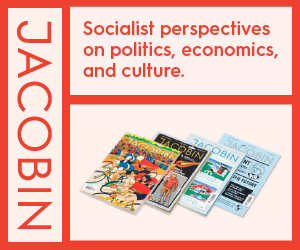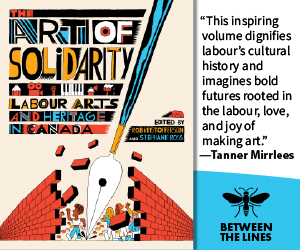Turning the Page on Colonial Oppression
Defenders of the Land Meets in Vancouver

The Defenders of the Land show their political strength. Photo by Juliana Moore.
Early this fall, an event largely ignored by the mass media in Canada, took place in northwestern Ontario. A floatplane filled with equipment and staff from the Platinex mining company attempted to land on Big Trout Lake, known as Kitchenuhmaykoosib to the local Inninuwug. The chief and other members of the community got in their boats and played a game of “chicken” with the plane, maneuvering their boats in front of its landing trajectory to keep it from being able settle onto the lake. After making several attempts, the pilot turned around and returned south. A few months later the community heard the news that the Ontario government had bought out Platinex’s interest in the disputed territory (part of Treaty 9) and announced that the platinum mining development in the region would not proceed.
I heard about the story from Sam Mckay at a Defenders of the Land gathering this fall in Vancouver. He was one of six members of the Kitchenuhmaykoosib Inninuwug band council jailed for trying to fight off Platinex a year and a half earlier. This provisional victory, along with a few others – charges were dropped in the fall against Grassy Narrows citizen Roberta Keesig for building an unlicensed cabin in her family’s traditional trapping territory – bolster the spirits of activists trying to turn back the tide of colonialism. Colonialism continues to ravage First Nations, Inuit, and Metis lands from real estate, logging, and hydro developments in the west coast, to the tar sands developments in Miskew Cree and Chipweyan territories, to hydro developments in Pimicikamak Inninew lands north of Lake Winnipeg, to logging in Asubpeeschoseewagong territory in Treaty 3, to “development” and government interference in Barrier Lake, to continued fishing and logging disputes involving Mi’kmaq lands and waters on the east coast.
But perhaps nothing is as inspiring as seeing and hearing people from all these communities – and more – gathered together to tell their stories and try to find ways of supporting each other.
Gathering Together
From November 26 to November 29 some of the leading Indigenous activists in Canada gathered at the Ukrainian cultural center in Vancouver. The Defenders of the Land gathering followed from a similar historic event that took place a year earlier in Winnipeg. Among those who attended were Shuswap’s renowned activist Arthur Manuel, Russell Diabo (a Mohawk from Kahnawake now working with the Barrier Lake Algonquian resistance), Sam McKay of Kitchenomaykoosib Ininuwug, Mireille Lapointe of Ardoch Algonquin First Nation, Terry Sappier of the Maliseet Nation resistance, elder Irene Billy of Secwenep opposition to Sun Peaks development, David Etchinelle of Shutagotine in Denendeh, Bertha Wilson of Tsawwassen First Nation, Delbert Guerin of Musqueam, Eugenie Mercredi of Pimicikamak, Judy DaSilva of Asubpeeschoseewagong, and Mike Mercredi of Fort Chipweyan. The list, a who’s who of Canadian Indigenous activists in attendance at the gathering, is too long to complete here. As Mireille Lapointe put it, “it’s just inspiring to be in this room with these people. It gives me hope. It fills my spirit.”
Building on Courage
In opening the meeting and welcoming us all to his home, unceded territory, Delbert Guerin (Musqueam) spoke strongly of the courage that was required to stand up and fight back: a courage that had lead him as chief to take his Nation’s case for redress of a land swindle to the Supreme Court of Canada, leading to the famous Guerin decision. The Defenders of the Land Gathering was trying to build on the courage of the many activists who were there, in at least two ways.
On the one hand, since the mainstream Indigenous political organizations have to varying degrees been institutionalized and have a muted role in the actual struggles taking place, it’s thought that a different kind of organization is needed, one that comes from the dissident communities, the communities engaged in direct, non-violent opposition to the state. If some kind of a network or vehicle can be created to coordinate these differing oppositions, it is quite possible that a page in Canadian history can be turned: something new may happen in the struggle for treaty and Aboriginal rights.
On the other hand, there is also a sense that, for perhaps the first time, it may be possible to build a sustained mass movement in support of Indigenous struggles in Canada. A number of non-Indigenous activists, myself included, from the growing number of Indigenous peoples solidarity organizations that are springing up were there for that purpose.
We shared stories. We workshopped plans. We drafted manifestos and resolutions. We talked and we listened. There was much to be learned from the various battles being fought across Canada in Indian Country. For example, on the flawed Tsawwassen treaty process, Bertha Wilson spoke with passionate anger: “our people who live here, our voices were drowned by all the votes of the people who married out and moved away long ago. They were tempted by the thought of money. They didn’t care about the land anymore. We who live here, we have to see what happens to the land. We care about it.”
People spoke about the band councils that were fighting back, and about the band councils that were colluding with the state. People spoke about the beauty of traditional territories and the ravages of industrial pollution. There was a shared sense of frustration and anger, and at the same time a determination and resolute hope.
There were real questions to be discussed: for example, how much criticism of mainstream organizations was appropriate? What sort of attention should be devoted to social issues and spirituality? How could this group say and do something about the issue of missing Indigenous women? Among these, at least one workshop devoted to international forums was lead by Arthur Manuel, who said that “we need to be engaging in this struggle on all levels, from the grass roots to the biggest international organizations. Our stories are being heard in Geneva and in other centers of international human rights.” These issues were discussed in plenary sessions, in workshops and often most passionately and pointedly in small groups sitting around the table and networking during breaks.
Why Canada is Different?
In the non-Indigenous peoples’ caucus, I learned something about why it’s easier to build a support movement for places far away from Canada (Chile, Nicaragua, South Africa) than to build one for Indigenous movements in Canada. It’s because in Canada we have to forge a real relation with real people. We have to watch our words more closely and accountably. We have to stand aside and let the Indigenous leaders do the talking, and we have to ethically confront ourselves in a way that supporting people far away does not demand. This is not to say that other, international solidarity work is easy, but rather to point to the specific challenges we face in building a mass movement of support for struggles taking place inside Canada. The participation of activists from No One Is Illegal, anti-racist, and diasporic communities was a significant and welcome part of the gathering.
Defenders of the Land will continue, because it has to. If artists and academics and, especially, trade unionists in Canada can see their way to providing support, it could become the mass movement Canada desperately needs. Defenders of the Land will continue because a justice that deserves the name does not come from corporate “sponsors” or state commissions or enlightened philanthropists or the march of progress, but from the ground up, from the people who directly and daily confront injustice. Their willingness to confront the established order, to stand their ground, to say “enough is enough,” is, in Canada, the space of real hope. Defenders of the Land will continue because this world, these lands, our country, cannot bear the burden of rapacious greed that motivates the small corps of elite bureaucrats who manage the selling of bush country with the smug self-importance of toadies everywhere. But more importantly, the courage and determination and creativity of the leaders, the real leaders, who came out holds a promise that a page in Canadian history, a page called the conquest, a page that still reads in lines of lands taken for profit, this page can perhaps finally be turned
This article appeared in the March/April 2010 issue of Canadian Dimension (Indian Country).







